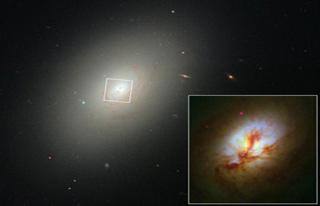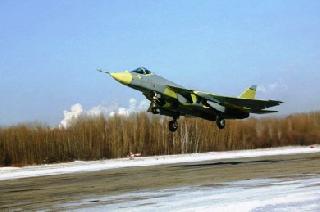
These images, taken with NASA's Hubble Space Telescope, reveal fresh star birth in the ancient elliptical galaxy NGC 4150, located about 44 million light-years away. Photo: NASA, ESA, R.M. Crockett (Univ. of Oxford, UK), S. Kaviraj (Imperial College London and Univ. of Oxford), J. Silk (Univ. of Oxford), M. Mutchler (STScI), R. O'Connell (Univ. of Virginia, Charlottesville), and the WFC3 Scientific Oversight Committee.
WASHINGTON (BNS): For some time now, astronomers have believed that ancient elliptical galaxies do not give birth to new stars anymore, but new images captured by NASA’s Hubble Space Telescope indicate otherwise.
Images of the core of NGC 4150, taken in near-ultraviolet light with the sharp-eyed Wide Field Camera 3 (WFC3), has revealed streamers of dust and gas and clumps of young, blue stars that are significantly less than a billion years old. Evidence shows that the star birth was sparked by a merger with a dwarf galaxy.
The new study have helped bolster the emerging view that most elliptical galaxies have young stars, bringing new life to old galaxies.
"These observations support the theory that galaxies built themselves up over billions of years by collisions with dwarf galaxies," Mark Crockett of the University of Oxford, and also, leader of the Hubble observations, was quoted as saying in a NASA news report.
The Hubble images have revealed turbulent activity deep inside the galaxy's core. Clusters of young, blue stars trace a ring around the center that is rotating with the galaxy. The stellar breeding ground is about 1300 light-years across. Long strands of dust are silhouetted against the yellowish core, which is composed of populations of older stars.
Based on Hubble analysis of stars’ colours, the star formation started about a billion years ago and the galaxy’s star-making factory has slowed down since then.
Crocket and his team, however, observed that most massive stars were already gone and that the youngest stars are between 50 million and 300 to 400 million years old. They also believe that the star birth came from a merger with a small, gas-rich galaxy around one billion years ago, which had the capability to fuel the star formation, the news report added.
The team selected NGC 4150 for their Hubble study because a ground-based spectroscopic analysis gave tantalising hints that the galaxy’s core was not a quiet place.
The ground-based survey, called the Spectrographic Areal Unit for Research on Optical Nebulae (SAURON), revealed the presence of young stars and dynamic activity that was out of sync with the galaxy.
The astronomers hope to study other elliptical galaxies in the SAURON survey to look for the signposts of new star birth.
 Previous Article
Previous Article Next Article
Next Article













The Indian Air Force, in its flight trials evaluation report submitted before the Defence Ministry l..
view articleAn insight into the Medium Multi-Role Combat Aircraft competition...
view articleSky enthusiasts can now spot the International Space Station (ISS) commanded by Indian-American astr..
view article